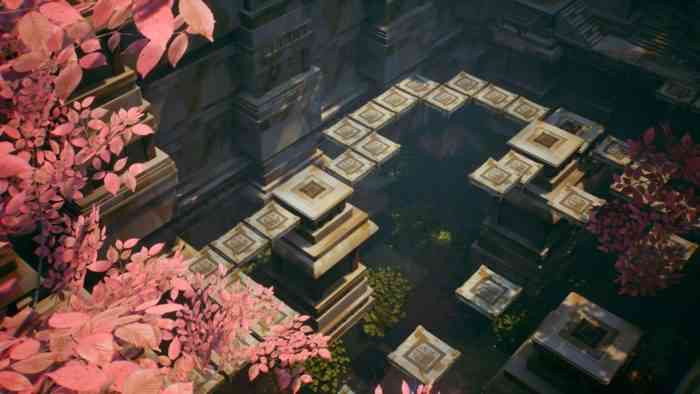Tasomachi: Behind the Twilight Review
I really wanted to like Tasomachi: Behind the Twilight more than I did. I have had my eye on the game for roughly the past year, having been reeled in by the game’s calming aesthetic and architecture of the towns. While my expectations of the game may not have been accurate, they were still unmet. Though I expect a bit more exploration and an existing narrative, Tasomachi still succeeded in being a decent platforming collection game.
The game puts you in the role of Yukumo, a young girl who gets stranded on an island once her airship breaks down. The island is completely uninhabited aside from a cat-like species, and a mysterious fog has covered different parts of the town. In order to lift the fog, Yukumo must find enough Sources of Earth in order to access and restore the Sacred Trees. Essentially, that is the whole narrative, if not even a bit more. While I expected the narrative to play a larger role in the game, it turns out that gameplay is the presumed driving force of the game.
The primary gameplay loop of Tasomachi revolves around Yukumo collecting Sources of Earth. These can be found in bushes, buried, on buildings, in shrines (essentially dungeons/puzzles), and elsewhere around the world. Early in the game, you require these Sources of Earth to progress through to subsequent areas and more Sources of Earth. As you complete shrines and restore Sacred Trees, Yukumo begins to get access to additional skills such as an air dash, double jump, and a ground pound.
Collect, Collect, Collect
The additional skills allow Yukumo to reach Sources of Earth that would otherwise be inaccessible to her. Later on, there is also an airship available. Essentially, the gameplay loop is to collect Sources of Earth and then collect some more. Collecting these objects often requires some platforming, but the game controls didn’t feel as accurate as I would have liked. In addition to finding them scattered around the various locations, you can also talk to the town’s cat-like inhabitants to gather mini-quests of sorts such as taking down posters in order to earn more Sources.
Tasomachi: Behind the Twilight is a game in which gameplay is the only driving force forward, especially without much of a narrative. Heck, the game at times felt more like a tech demo than an actual game, but that’s what we got here. There is definitely something to be said about relaxing games with a casual objective and a minimalistic narrative, but that doesn’t feel like what we have here with Tasomachi. The game felt too simplistic without a clear motivator to push the game forward, and I shifted from trying to collect all Sources of Earth to simply getting enough of them to move on.

While Tasomachi: Behind the Twilight doesn’t play as well as one might hope for, the game still looks as expected. The game’s art style combined with the overall architecture helps the title to stand out visually. This is especially the case when the fog in each area eventually clears, and the vibrant colors stand out all the more. Though the visuals impress, each area essentially looks the same given the color palettes and architecture. While the areas are obviously different in terms of size and location of landmarks, it just as easily could have all taken place in the same area for all I know.
Overall, Tasomachi: Behind the Twilight is a bit of a letdown. I suppose some of that conclusion can be traced back to my own anticipation and misunderstanding of what the game was, but the fact is that objectively, Tasomachi is a simplistic collect-a-thon without a clear motivator to drive the player forward. While the game has a strong base, more could have been done to make it feel more like a game and less of a demo. While the sum of its parts leaves some to be desired, various aspects of Tasomachi: Behind the Twilight show what the developers at Orbital Express are capable of, and that is something I’ll be looking forward to.
*** A PC review code was provided by the publisher ***
The Good
- Vibrant visuals
- Calming collecting
The Bad
- Inconsequential narrative
- Not much to do
- Gets repetitive quickly

